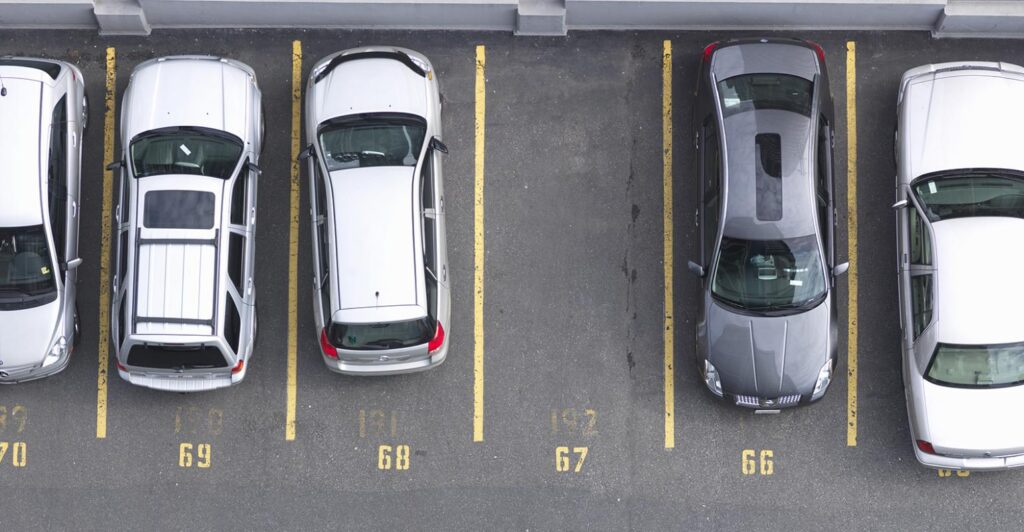How restaurants can protect guests from car injuries in parking lots
Operators have a duty to protect their patrons. Here’s what you need to know.
20 August 2024
Share this exclusive content from Saladplate

Photo Credit: Moonstone Images / iStock / Getty Images Plus
Most injuries and deaths in parking lots are not reported. Unless there is a fatality, most law enforcement agencies do not submit crash reports to state DMV agencies. However, we know that there are many unreported pedestrian-auto collisions in retail parking lots. Since these events occur regularly in parking lots throughout the United States, they are in legal terminology “foreseeable.”
In most states there is a legal duty imposed on restaurant owners to warn patrons of any risks on the premises, and to take reasonable action to prevent them. “Premises” not only includes your restaurant, but also sidewalks and parking areas. Restaurant owners and property managers have a legal duty to take reasonable action to make the premises safe for their customers, who are “invitees.”
Primary causes of auto-pedestrian injuries in parking lots
Auto-pedestrian injuries and fatalities in parking lots can be attributed to three main causes: Driving at an unsafe speed, driver impairment, and driver distraction.
Driver distraction can be sub-divided into four categories: visual distraction (looking at something other than the roadway), auditory distraction (hearing something not related to driving), manual distraction (manipulating something other than the steering wheel), and cognitive distraction (thinking about something other than driving).
Driver distraction in parking lots is a dangerous problem. In a distracted driving public opinion poll conducted in 2016 by the National Safety Council, 66% of drivers admitted to using their cellphones and 56% admitted to texting while driving through parking lots. Cell phone use reduces a driver’s ability to observe and avoid pedestrians. When drivers are texting, they are not able to see pedestrians.
Pedestrian distraction
“Pedestrian distraction” is also a risk factor contributing to auto-pedestrian injuries and fatalities in their parking lots. In 2022 I conducted a field study of drivers and pedestrians at three shopping centers in Austin, Texas. After observing 500 cars, I noted that 7.25% of the drivers were holding, talking, or texting on their cellphones while driving. This percentage is much lower than the self-reported numbers in the National Safety Council 2016 poll and is probably due to Bluetooth technology, which allows hands-free use of cellphones while driving. Bluetooth technology began working its way into cars in 2000. Although a driver may not be holding a cell phone, and may be using Bluetooth technology, cognitive distraction remains present, and presents a real risk to pedestrians on your property.
I also observed and recorded pedestrians walking in these shopping centers. Some 24% of these pedestrians were holding and looking at their cellphones while walking through parking lots in these shopping centers. This would be classified as “pedestrian distraction.” Pedestrian distraction and inattention increase the risks of injury to pedestrians, especially when crossing driveway areas and walking through parking lots. These are another causative factor in auto-pedestrian collisions.
With the advent of technology and saturation of smartphones in our society, there has been a substantial uptick in driver distraction and distraction of pedestrians. In busy downtown metroplexes, pedestrians visually and cognitively wrapped into their cellphones step out in front of vehicles quite often.
Cell phone distraction has even been studied by trauma physicians. In an article published in the Journal of American Medical Association in 2019, “Head and Neck Injuries Associated with Cell Phone Use,” Roman Povolotskiy, Nakul Gupta, and Adam Leverant quantified emergency room data during a 20-year period from 1998 to 2017. They discovered that the incidence of cellphone distraction injuries in the United States has dramatically increased. In 2007 there were nine new cases per million persons. By 2017 there was a much steeper increase, to a peak of 29 new cases per million persons. Their data indicates a 300 percent increase in cellphone distraction injuries from 1998 to 2017. Unfortunately, our ability to deter pedestrians’ use of cellphones while walking through parking lots is virtually impossible, so we must focus on controlling drivers in our parking lots.
Vehicle speed is the primary cause of injuries and death of pedestrians
Velocity (speed) is the single most important factor causing injuries and death of pedestrians. Even a small increase in vehicle speed can cause massive increases in energy and forces that cause trauma and/or death to pedestrians when struck by a vehicle.
When speeds of vehicles are reduced, the risk of crashes is also reduced between motor vehicles and pedestrians. A vehicle traveling at just 9 mph generates 18 times the force of a vehicle traveling at 3mph.
The solution is to slow down drivers in parking lots and driveways
Speed bumps ensure that vehicles will not drive at high rates of speed. They are designed to slow vehicles down to a walking speed, which is 3 mph. Even if there is an auto-pedestrian collision at 3 mph, it would most likely be survivable with minor injuries.
The most effective and least expensive speed mitigation devices are speed bumps. Speed bumps are constructed of concrete, asphalt, or rubber, and placed at appropriate distances before pedestrian crossings, throughout roadways, and in long parking rows. This will ensure a reduction in motor vehicle speed to a “walking speed.”
In addition to the installation of highly visible, reflective painted speed bumps throughout parking lots and at pedestrian crossings, other speed mitigation devices that should be considered include:
- High-contrast LED flashing signs: “pedestrian crossing ahead”
- Stop signs at all pedestrian crossings
- High-visibility and high-contrast painted crosswalks
- Increased lighting to help drivers see pedestrians
Restaurant owners have a duty to warn customers of dangers on their property, including their parking lots. There is a duty to take reasonable steps to eliminate dangerous conditions. We cannot ignore safety issues of racing, speeding, impaired, and distracted drivers, which are present in parking lots and driveways.
Signs alone are not the answer. Signs can be ignored by reckless, distracted, and impaired drivers. The single best deterrent to speeding, inattentive, and reckless drivers are speed bumps. Speed bumps force drivers to slow down to a crawl. Speed bumps are inexpensive, and they save lives and help prevent serious injuries.
Restaurant owners should also consider installing bollards at building entrances to protect patrons. Lawsuits against property owners for failing to install bollards to stop runaway vehicles from striking patrons are dramatically increasing. Bollards should be commercial grade heavy steel pipes sunk deep with concrete, not using bolts that shear when struck by heavy vehicles.

Source: Nation’s Restaurant News



